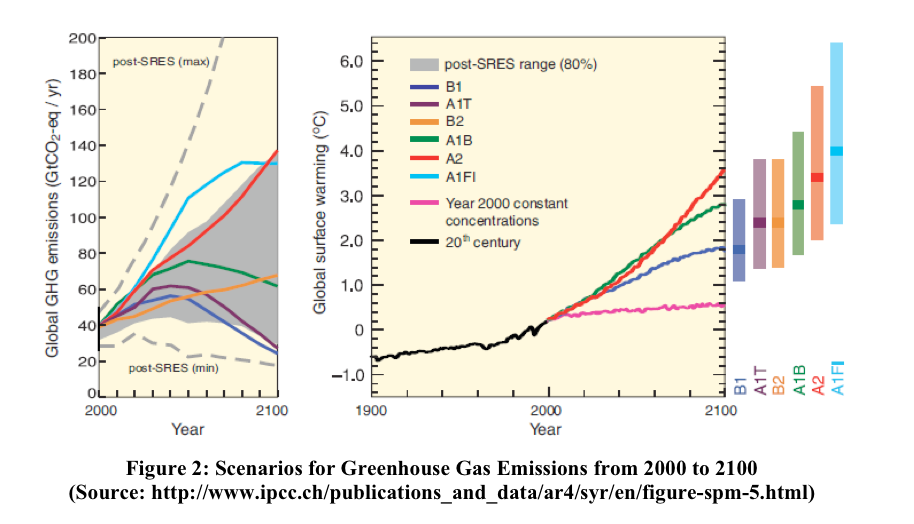US GREEN BUILDING COUNCIL
Introduction
A changing climate presents a challenge to the planners and designers of the built environment. Building professionals will need to incorporate strategies that consider future climate change within their region. This contrasts with the current practice of basing building and neighborhood design decisions on historic climate data.
While ICLEI-Local Governments for Sustainability (ICLEI) encourages cities to plan for the effects of climate change by creating a comprehensive climate adaptation plan, building professionals need their own framework and tools for incorporating climate adaptation strategies in their projects. This section of the report describes climate adaptation planning, the primary ways that climate currently influences building and neighborhood design at a variety of scales, and the steps for incorporating climate adaptation strategies into a project.
The Challenge of a Changing Climate
The IPCC and the EPA report that some degree of climate change will occur regardless of whether we begin to significantly reduce our greenhouse gas emissions. The effect of climate change on neighborhoods and buildings will depend on the sensitivity and adaptability of these systems (US EPA 2011). Adaptation is defined as the adjustment of our built environment, infrastructure, and social systems in response to actual or expected climatic events or their effects. Adaptation includes responses to reduce harm or to capture benefits (IPCC 2007) as well as resilience, the ability of a system to absorb a climatic event without failing or changing state.
Until now, green building practice has focused primarily on lessening the built environment’s contribution to climate change through the reduction of greenhouse gas emissions. This is still a critical role for green building, as residential and commercial buildings contribute approximately 37% of the total greenhouse gas emissions in the United States (U.S. Energy Information Administration 2009). The next step is to understand the impact of climate change on the built environment and to incorporate appropriate adaptation strategies into green building practice so that the environments we design, build, and manage today will be suitable for a range of uncertain futures.
Emissions trends help us to understand why the climate is changing, but it is difficult to predict the long-term climate impacts of greenhouse gas emissions. Making exact predictions of how global average temperatures will change over time is complicated by factors such as population growth, economic growth, technological development, and energy efficiency improvements (Nakicenovic et al. 2000). These four factors result from human behaviors and policies and complicate any series of calculations.
For green building professionals, an integral part of adapting to climate change is the continued effort to reduce greenhouse gas emissions from the built environment while increasing adaptation strategies. Mitigation and adaptation strategies should not be seen as an “either/or” proposition. For example, renewable energy strategies will both reduce a building’s dependency on the electrical grid and reduce carbon emissions and potentially make the building more resilient to power outages. Therefore, green building strategies can often reduce greenhouse gas emissions while building resilience to the effects of climate change by enabling future adaptation.
Read full report (PDF) here: Green Building and Climate Resilience
About the USGBC
www.usgbc.org
“The Washington, D.C.-based U.S. Green Building Council (USGBC) is a 501 c3 non-profit organization committed to a prosperous and sustainable future for our nation through cost-efficient and energy-saving green buildings. With a community comprising 78 local affiliates, nearly 16,000 member companies and organizations, and more than 170,000 LEED Professional Credential holders, USGBC is the driving force of an industry that is projected to contribute $554 billion to the U.S. gross domestic product from 2009-2013. USGBC leads an unlikely diverse constituency of builders and environmentalists, corporations and nonprofit organizations, elected officials and concerned citizens, and teachers and students.”







 RSS Feed
RSS Feed